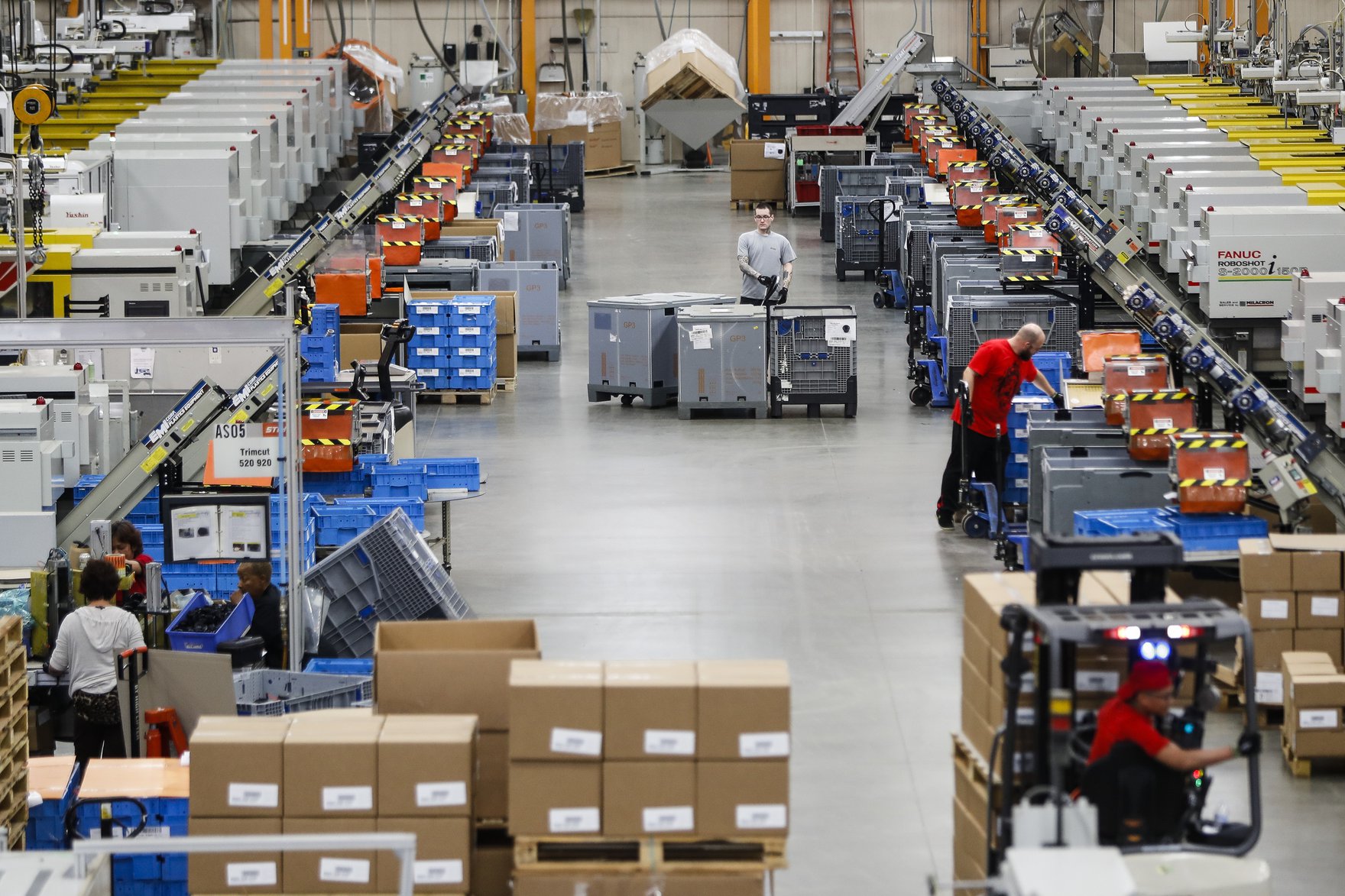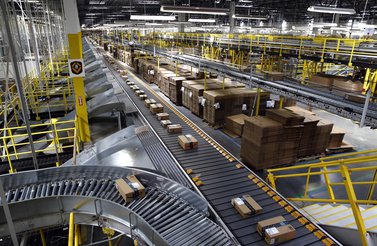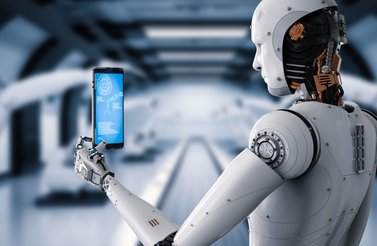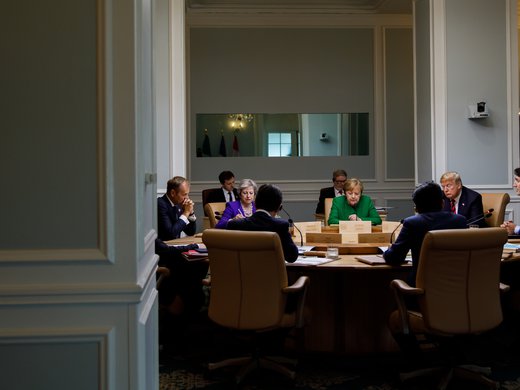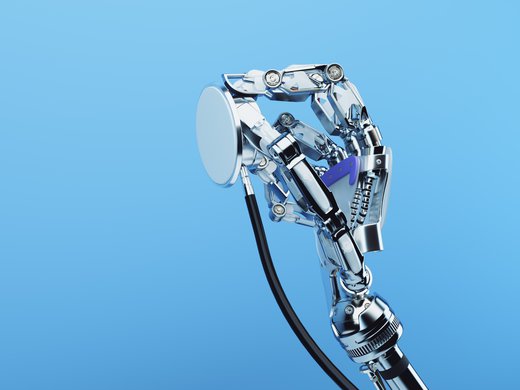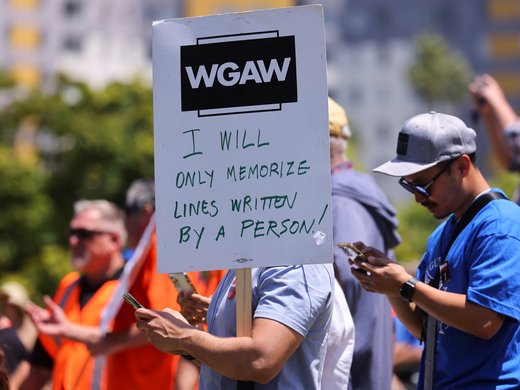New York Mayor and former Democratic presidential candidate Bill de Blasio made a big splash earlier this month when he suggested that policy makers should implement a “robot tax” for corporations that displace humans.
The nominee, hoping to revive a struggling — but ultimately unsuccessful — presidential campaign, suggested in his Wired op-ed that he would set up a new federal agency to oversee automation and that corporations would have to pay a robot tax, or five years of payroll taxes up front, for each employee eliminated by a robot. In his introduction, de Blasio describes a Japanese computer parts manufacturing complex that runs close to 24 hours a day and is operated by unsupervised robots for as long as 30 days at a time.
The proposal received a lot of news media coverage, and the verdict was both good and bad. The libertarian Reason suggested that a robot tax would trap workers in jobs that could be made more efficient and productive. Conservative columnist Douglas MacKinnon praised de Blasio for having the vision and the guts to rise up and meet one of the world’s biggest emerging threats.
Even so, de Blasio isn’t the first high-profile individual to suggest that policy makers should impose a robot tax. Others have also warned about escalating job losses emanating from automation. Billionaire Microsoft founder Bill Gates in 2017 suggested that governments should tax companies’ use of robots. Democratic presidential candidate Andrew Yang, an ex-tech executive who started the non-profit Venture for America, has suggested that Americans should receive a “freedom dividend” of $1,000 a month, which would provide a basic income, even if their jobs were lost due to automation. Pete Buttigieg, mayor of South Bend, Indiana, and also a Democratic presidential candidate, argued that jobs in “each industry” will be affected or lost due to automation and technology.
But even those who are open to the robot tax idea say they struggle to understand how it could be implemented.
Eli Dvorkin, policy director of the New York City-based non-profit, non-partisan think tank Center for an Urban Future (CUF), suggests that de Blasio should receive credit for elevating what he considers to be a big and complex issue that will expand in magnitude in the coming months and years. However, he questions the tax idea.
“Automation is about more than robots,” said Dvorkin. “The ability to identify that this is the thing that is displacing a human from a job can be an incredibly hard thing to do.”
He suggested that in New York City, it isn’t so much robots, but rather algorithms that are dislocating workers. The CUF issued a study in 2018 suggesting that there are only about 7,000 jobs in New York City that are fully automatable, while an additional 456,000 jobs could have 80 percent of their tasks performed by a machine.
The attention on worker displacement has historically focused on blue collar manufacturing jobs, such as automobile assembly. However, the CUF’s study raised serious concerns about how automation and algorithms are displacing — or at least transforming — white collar jobs, such as bookkeeping, accounting, tax preparation and auditing, as well as other types of occupations, such as data entry, dry cleaning, packaging, stock clerking, logistics and food preparation.
“When we think about jobs that are vulnerable to automation, we usually think about routine manual labour jobs, such as swiping a bar code or moving a widget down the assembly line,” Dvorkin said. “The next wave of automation is not just routine manual work but routine cognitive work. It is working its way into the office.”
Bookkeepers and inventory clerks in warehouses, for example, may soon have to adapt to new technology or face job losses because the categories are becoming highly automatable.
“There is going to have to be a level of basic digital skills needed to do these jobs,” he said. “Someone who does the books manually on paper, or even in spreadsheets, will have to develop a new level of digital fluency to keep those jobs.”
Instead of a robot tax, Dvorkin argues that policy makers could try to tackle the emerging robot and algorithm problem by investing in a massive re-think of education and lifelong skills development.
Governments and companies could invest more into employment training, including for those workers who are already part of the labour force. Dvorkin points out that one option is for policy makers to develop so-called lifelong training accounts (tax-advantaged retirement plans such as a 401K in the United States or a Registered Retirement Savings Plan in Canada) in which pre-tax income can accumulate, paired with company contributors, to go toward future training needs.
“It would incentivize companies to match those investments and it could focus on highly vulnerable industries,” Dvorkin said. “We need to dramatically expand training options for many workers today.”
Critics of the current system, which doesn’t focus enough on continuing education, contend that there are too few options for retraining workers; most options today, such as Brooklyn Workforce Innnovations, Ace New York and The Doe Fund, are for underemployed or unemployed individuals. Dvorkin reports that New York City’s free and low-cost training programs focused on technology careers are serving no more than a few thousand adults in the city each year. Training programs should scale up, and workers should be able to take short-term programs to meet employer demands, he said.
“The kinds of worker training that can connect people with limited formal education to fast-growing careers is operating at a really small scale,” he said. “We spend billions more nationally on higher education than we do on workforce development and job training.”
Implementing a robot tax, rather than working on a fundamental shift in education, could have broader negative implications on global competition.
“There is a lot of pressure on the US to stay competitive, with a rising China and competition from other countries that were previously in the development category, but now have reached industrialized status.” Dvorkin said. “The idea that we would disincentivize innovation is a short-sighted policy.”
For now, the idea of a robot- and algorithm-driven employment apocalypse may seem unlikely, or at least something to contend with years down the road. However, policy makers should pay more attention to de Blasio’s warning; the rise of automation in the workplace may warrant a broad re-evaluation of worker education programs and the tax systems that apply to employers.
